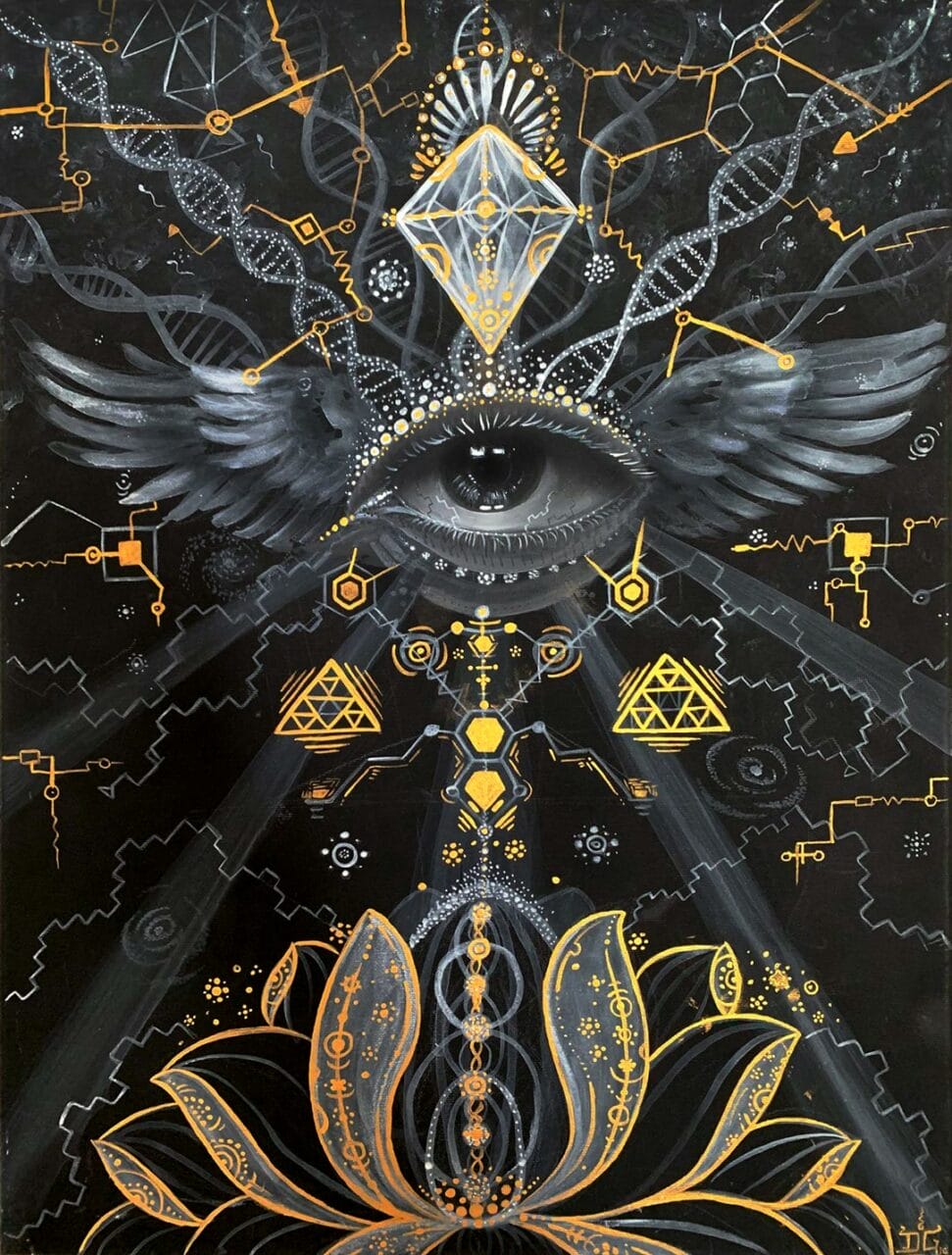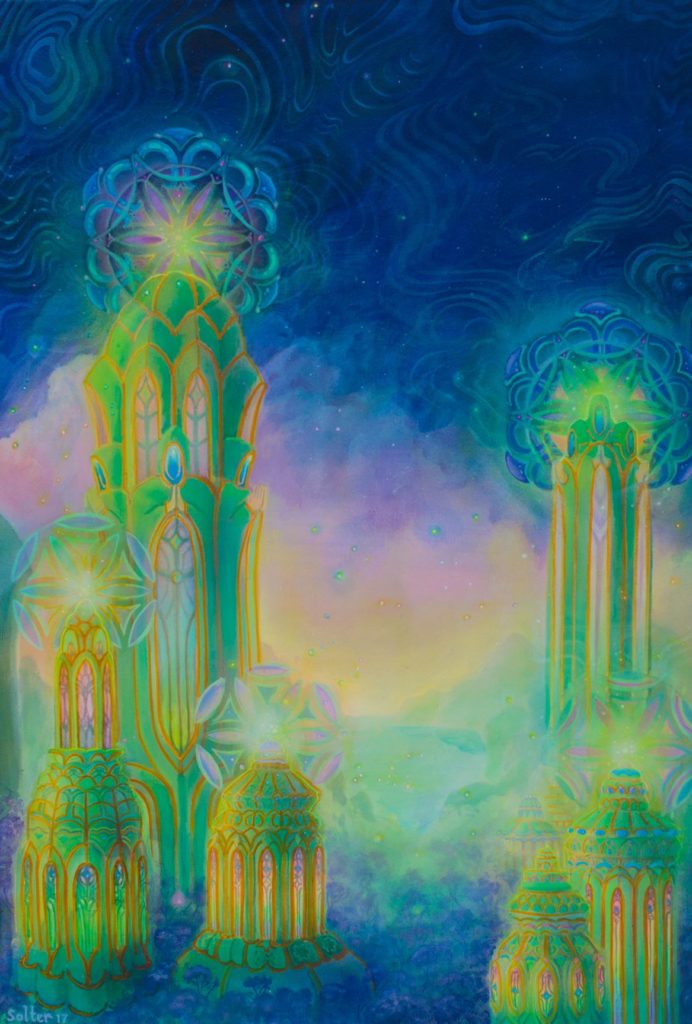
© Uni Kaya
The Historical Evolution of Magic Mushrooms
The origin of Magic Mushrooms can be traced back to 9000 BC, according to historical data. These unique mushrooms, which boast over 200 species, contain psilocybin, a compound known for its hallucinogenic properties. The effects may involve changes in perception, auditory and visual hallucinations, and intense spiritual encounters. These mushrooms have been used in spiritual ceremonies, rituals, and practices by various cultures and tribes for millennia. A considerable number of these historical uses originate from North and South America.
Magic Mushrooms in Ancient Times
Over time, numerous cultures have made use of natural psychedelics. Evidence found in the Sahara Desert suggests that humans were consuming Psilocybe Cubensis over 7000 years ago. Archaeological finds depict representations of this narcotic substance in prehistoric art from various regions. For instance, indigenous tribes of North Africa in the Sahara illustrated its use in their artwork dating around 9000 BC. Similarly, the well-known Selva Pascuala mural rock painting in Spain, roughly 6000 years old, indicates the use of Psilocybe Hispanica in religious rituals. These substances’ influence on our cultural evolution, religion, art, societal norms, and daily life is becoming more apparent. This substance has undoubtedly left a significant mark on our culture and society.
A Historical Overview of Magic Mushrooms Usage
Historically,Magic Mushrooms have been consumed for a long period. The mind-altering substance we know today has passed through various centuries, each with different practices regarding its use. Who could resist nature’s gifts? It’s about time for Schedule35 Canada to delve into the historical path that has led Magic Mushrooms to its current status.
Major Highlights
- Dried Magic Mushrooms have been part of traditional rituals and spiritual healing for centuries. Today, they are used as a treatment for mental health conditions.
- Magic Mushrooms became a hallmark of the hippie culture, contributing significantly to the psychedelic revolution and encouraging its recreational use.
- Key figures such as Wasson, Sabina, and McKenna were instrumental in introducing psilocybin to the modern world.

© Jonathan Solter
Backing the Stoned Ape Theory
The Stoned Ape Hypothesis was put forth by Terence McKenna, who proposed that psilocybin might have been a significant factor in human evolution, especially in terms of cognitive development. Regardless of some critiques, the intriguing aspects of this theory are undeniable.
Ancient Civilizations and Sacred Rites
Ancient societies depicted cubes in symbols, artworks, and sculptures, indicating the ceremonial application of Magic Mushrooms. The Mayans and Aztecs used it as a medium to interact with supernatural beings, including gods. In the culturally diverse Aztec society, it was referred to as “teonanácatl“, which translates to “flesh of the gods”. The concept of a psychedelic experience was alien to them, hence they regarded it as a divine entity. Venturing northward to Siberia, hallucinogenic Magic Mushrooms were employed by Siberian shamans. They specifically utilized the hallucinatory substance (Magic Mushrooms), known as “Amanita Muscaria”, for spiritual healing and conventional customs, notwithstanding its toxic characteristics. This usage dates back to approximately ten thousand years ago. In African tribal rituals, notably among the tribes of Congo and Zimbabwe, cubes were deployed for communicating with ancestors, inciting visions, and promoting spiritual healing. These ancient societies provide context to contemporary psilocybin usage. The reverence for this substance in these cultures originated from its divine connotations and its ability to trigger mystical experiences.
Magic Mushrooms in Legends and Folktales
Numerous accounts, including those from Gordon Wasson, have highlighted the connection between Magic Mushrooms and the mystical world, stressing its significance in folklore and mythology as a medium for divine interaction and enlightenment. In olden India, the Soma—a ceremonial beverage mentioned in the Vedas—was thought to bring about altered states of consciousness. Scholars such as Wasson postulate that it might have been brewed from psychoactive plants, specifically fly agaric. Some even suggest that this age-old drink might have included a mixture of various plants. Regardless of its origin, the psychedelic history suggests that Soma facilitated the revelation of sacred symbols during rituals, symbolizing a portal to higher wisdom or spiritual enlightenment.
The Contemporary Era
A Glimpse into the
Basis
Historical data from the era before Columbus arrived indicates that Mayan and Aztec civilizations utilized psilocybin Magic Mushrooms. In the 15th and 16th centuries, Spanish rulers deemed its use primitive and subsequently outlawed it. Regardless of this ban, shamans secretly continued to ingest the mystical Magic Mushrooms, thus preserving their cultural customs for over four centuries.
Reemergence in the Western World
The 1950s witnessed a revival of these substances in the Western world, largely due to the pioneering work of R. Gordon Wasson, Roger Heim, and Albert Hofmann. On a journey to Mexico, they successfully isolated the two psychedelic compounds (psilocybin and psilocin) found in the Magic Mushrooms they obtained from the Mazatec tribe. Wasson went on to share his discoveries, uses, and understanding of magic Magic Mushrooms in Life magazine. His articles and firsthand experiences brought recognition to the substance as a potent hallucinogen. By the advent of the 1960s, the substance had become a hallmark of the Hippie movement and was perceived as a conduit to spiritual journeys. Nonetheless, its use also caused considerable controversy and sparked a revolution in the recreational consumption of hallucinogenic substances.
Subsequent Progress: Worldwide Ban
In 1971, the United Nations Convention on Psychotropic Substances labeled psilocybin as a Schedule 1 illegal drug, alongside Lysergic Acid Diethylamide and N, N-Dimethyltryptamine. They were all considered to have no therapeutic value and a high abuse potential. This led to its widespread criminalization in Western nations, including Canada and the U.S., severely limiting the spiritual and therapeutic uses of the substance.
The Modern Resurgence of Psilocybin
In the present day, there has been a softening of the strict laws regulating the use of psilocybin, starting with its decriminalization. This shift is in line with the UN’s allowance for treaty member countries to control the substance as they see fit. Simultaneously, a growing body of research and clinical trials on psychedelics and consciousness strongly suggest potential medical uses for psilocybin. A 2021 study investigating the therapeutic application of psychedelics indicates that the 1970 prohibition significantly hindered further research. However, a preliminary study in 2004 rekindled interest in psilocybin, suggesting potential uses in neuropsychiatry, especially for treating mental health conditions such as:
- Depression, Anxiety, and Stress
- Post-traumatic Stress Disorder (PTSD)
- Obsessive-compulsive Disorder (OCD)
- Substance Abuse (Aiding in Addiction Recovery)
- Excessive Alcohol Consumption and Drugs)
Media and Art’s Influence
Conversations surrounding psychedelic cubes are so common that they appear in various mediums. Media, art, and literature have reignited the public’s fascination with these substances. Movies like “Fantastic Fungi” directed by Louie Schwartzberg and documentaries that delve into their therapeutic benefits have enhanced people’s understanding of their psychological and physical effects. Author Michael Pollan, known for his book “How to Change Your Mind,” has explored the use of psychedelics for mental health and spiritual development, reviving their societal and healing relevance.
Prominent Historical Advocates of Fungi
- María Sabina: A Mazatec shaman and poet from Mexico, Sabina contributed to the introduction of cubes to the Western world. She allowed Wasson to observe her Magic Mushrooms rituals.
- Gordon Wasson: Wasson, a writer, gained recognition for shining a light on this drug globally. His vivid recounting of his encounters with Sabina broadened the understanding of its indigenous use.
- Terence McKenna: As a notable supporter of psychedelics, McKenna was instrumental in emphasizing their cultural and philosophical significance. Through his speeches, writings, and studies, McKenna popularized the “Stoned Ape” theory, presenting it as a cognitive development tool that had societal impacts.
The Journey – An Overview
with TRD.
| Prehistoric | Stone art discovered in the Sahara, Africa, portrays prehistoric use. |
| Ancient | The Maya and Aztec civilizations integrated teonanácatl into their religious and spiritual rituals. |
| 16th Century | Its association with Indigenous beliefs led to the discouragement of its use. |
| 18th Century | In 1799, the “intoxicating” effects of the drug came to light when four children accidentally consumed Psilocybe Semilanceata, highlighting the potential negative outcomes of its use. |
| 20th Century | Wasson and Sabina introduced the drug to the Western world, sparking a psychedelic revolution among hippies. The UN legalized the possession and use of the substance. |
| 21st Century | Clinical studies are underway to validate its medical potential. |
The Emergence of the Psychedelic Era and Beyond Salvation | Purchase Magic Mushrooms Online at Schedule35 Canada
The consistent usage of cubes at Schedule35 Canada, supported by substantial scientific research, will persistently expand until it achieves worldwide acceptance. The online Magic Mushrooms store at Schedule35 Canada is prepared to facilitate this change. We offer a wide range of products that attract customers and inspire them to undertake the mystical and healing journey of psilocybin. Secure your preferred items from Zoomies today.
Commonly Asked Questions
No, Amanita Muscaria does not possess the active ingredients found in Psilocybe Cubensis. Instead, the psychoactive compounds in fly agaric are muscimol and ibotenic acid. One prevalent theory about Soma’s origin proposes it to be a mixture of various psychoactive plants. Similarly, ayahuasca is a beverage that alters consciousness. However, the sole link between the two is the consideration of soma as an analogue of ayahuasca. It was studied for potential Magic Mushrooms poisoning after being classified as a toxic Magic Mushrooms. Today, it is recognized as the Psilocybe Mexicana.

